major
cracking in stucco
I recently saw your web site and have a couple questions about
stucco finishes. I am a structural engineer and have no experience with
stucco. I was recently called out to look at a structure that had major
cracking in the stucco siding that is less than 6 months old. The
reason for my site visit was to do a post earthquake evaluation on the
structure after we had a mild (4.0) earth quake in Spokane Washington.
The structure has many cmu partition walls between concrete moment
frame
columns, the cmu wall showed no signs of damage at all. The exterior of
the building is brick with a band of stucco that wraps the upper half
of
the building. The brick shows no signs of movement or indications of
cracking.
The main portion of the building was constructed about 6 years ago and
shows evidence of long linear cracks running horizontal or vertical in
different panels. the following picture however is on an addition that
was finished about 6 months ago. As you can see it has cracks running
in
all directions, most of these are
either hairline cracks or are not showing through at all. I
looked
at the
surface with a 30x magnifying scope and noticed that some of
the
cracks look like they are behind the finish coat, i.e. you can see a
trowel
mark/ stucco that runs over the top of a hairline crack with the stucco
finish actually appearing to bridge the crack. I am pretty sure that
this
was never repaired and is still a "virgin" job.
The building engineer is convinced that the
cracking
is from the recent
earthquake, and I have never seen a stucco finish after a mild
quake
but I
would expect to see more patterned and diagonal cracking,
would
this be the case? Most of the cracks in the main portion of the
structure
has vertical or horizontal cracks and no diagonal.
The worst spot I saw here and due to faulty application is the
white
curtain wall:
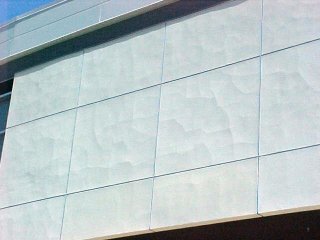
What apparently happened here is the finish coat is applied in 2
coats-the
scratch and the double-up coat. The scratch coat was allowed to sit too
long before the double allowing the mortar to shrink and crack. Or the
wall was not wet down
enough. Either way, the double up coat wasn't enough to kill these
cracks.
This not only looks bad, but there is a real danger of pieces falling
off due to failure to bond.
This I'm sure existed before the earthquake. They look terrible because
they are white and probably in the bright sunlight most
of the day. You can always expect some cracks in stucco.
I have been able to limit cracks in recent years but not prevent them.
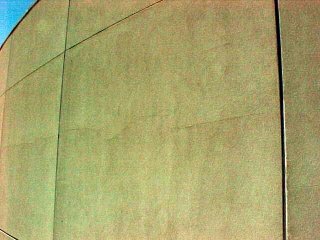
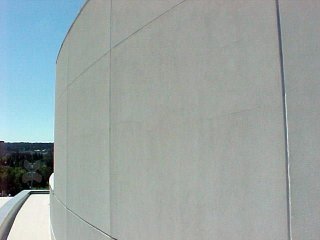
The pictures above are pretty much typical cracks.
These are at where the lath overlaps-the weakest spot. These should not
be repaired or filled as it would detract from the appearance ofthe
stucco.
Industry standard is to overlap lath 1" at the edges. We overlap ours
3".
This is what I learned so why not.

The ceiling probably has always had these cracks. I know these-the
ceiling wasn't
suspended but attached directly to the structure. How do I know?
First of all there is no room for hanger wire. Second, we did a big
ceiling 7 yearsago at Andrews Air Force Base. We tied the channel iron
and lath
directly to the structure, in this case, Heavy gage metal stud trusses.
Fortunately, and old lather I know told me that the ceiling would crack
at every joist. A suspended ceiling would have more "give" do to
building
movement. Still, a suspended ceiling always tends to crack around
lights and other openings.
I was able to write a CYA letter to the government before we applied
mortar
to the ceiling explaining the ceiling would crack at every joist. The
inspectors
were unreasonable Nazis and I would have had trouble getting the
ceiling
approved
if it wasn't for the letter and a meeting with the architect. A big
vibrating machine vibrating the parking lot aggravated the cracking
more.
I think these cracks may have been there before the
quake.
The really don't look
bad and there is nothing much you can do.
The picture with the straight-edge is bad-the stucco has
buckled or
delaminated
and should be repaired one day. If not it could lead to spalling.
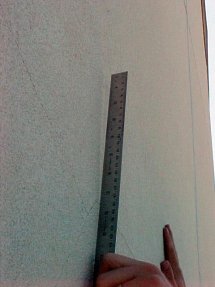
The white stucco with the penny probably shouldn't have any water
infiltration
and could be ignored.
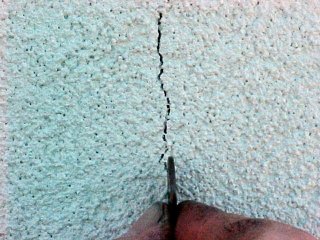
Since I received this question, we has discovered new ways to
prevent
cracks
by using acrylic additives and the discovery of different kinds of
sand.
|





